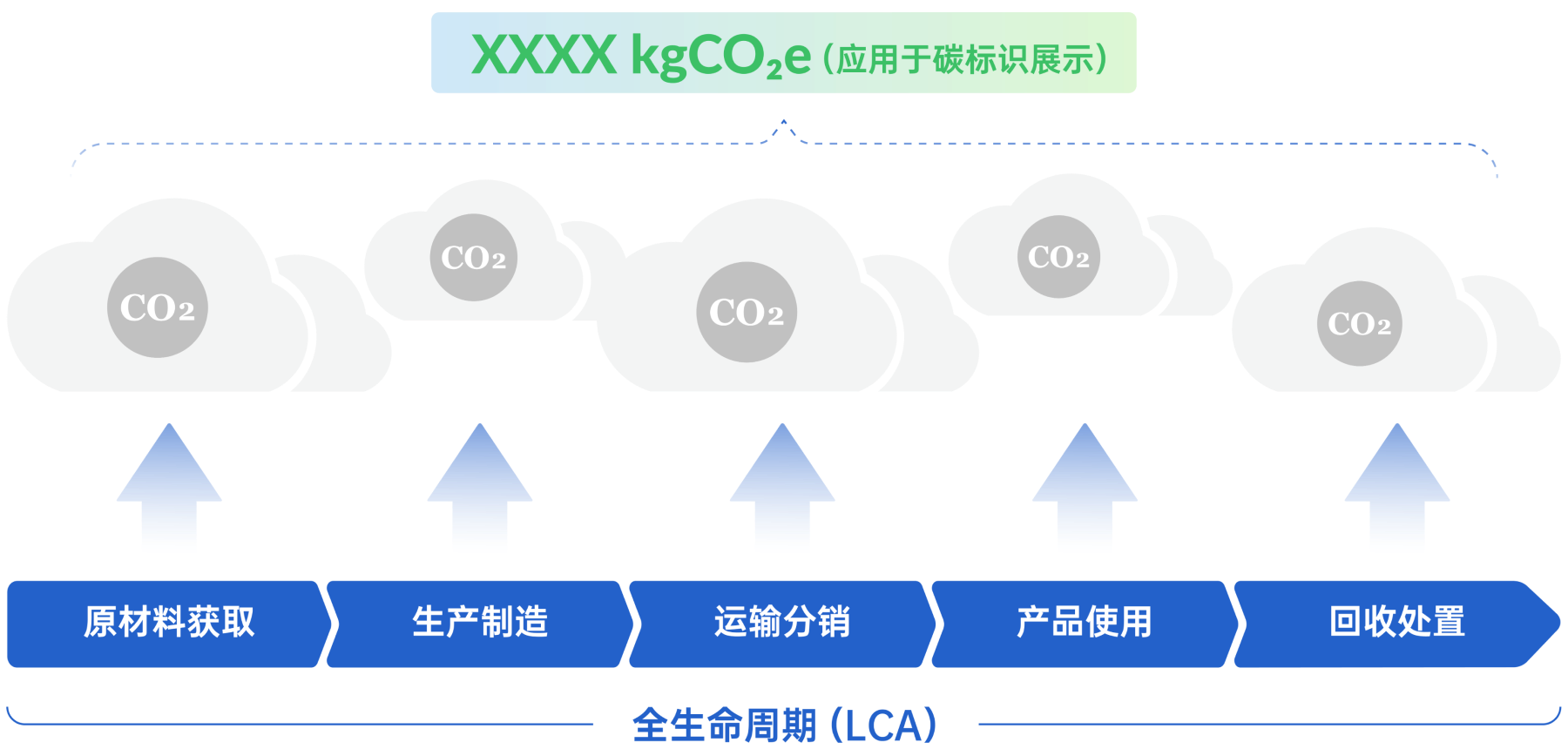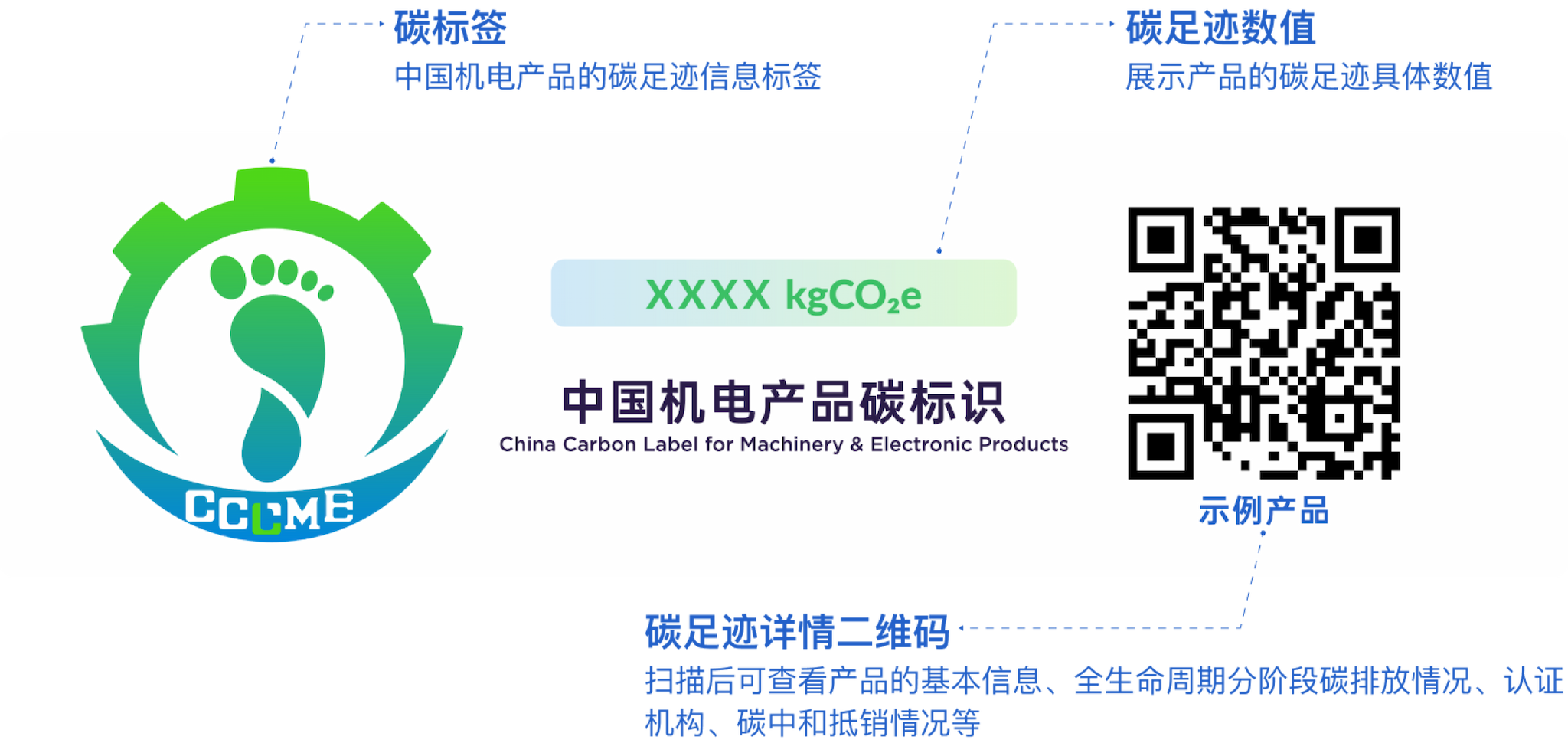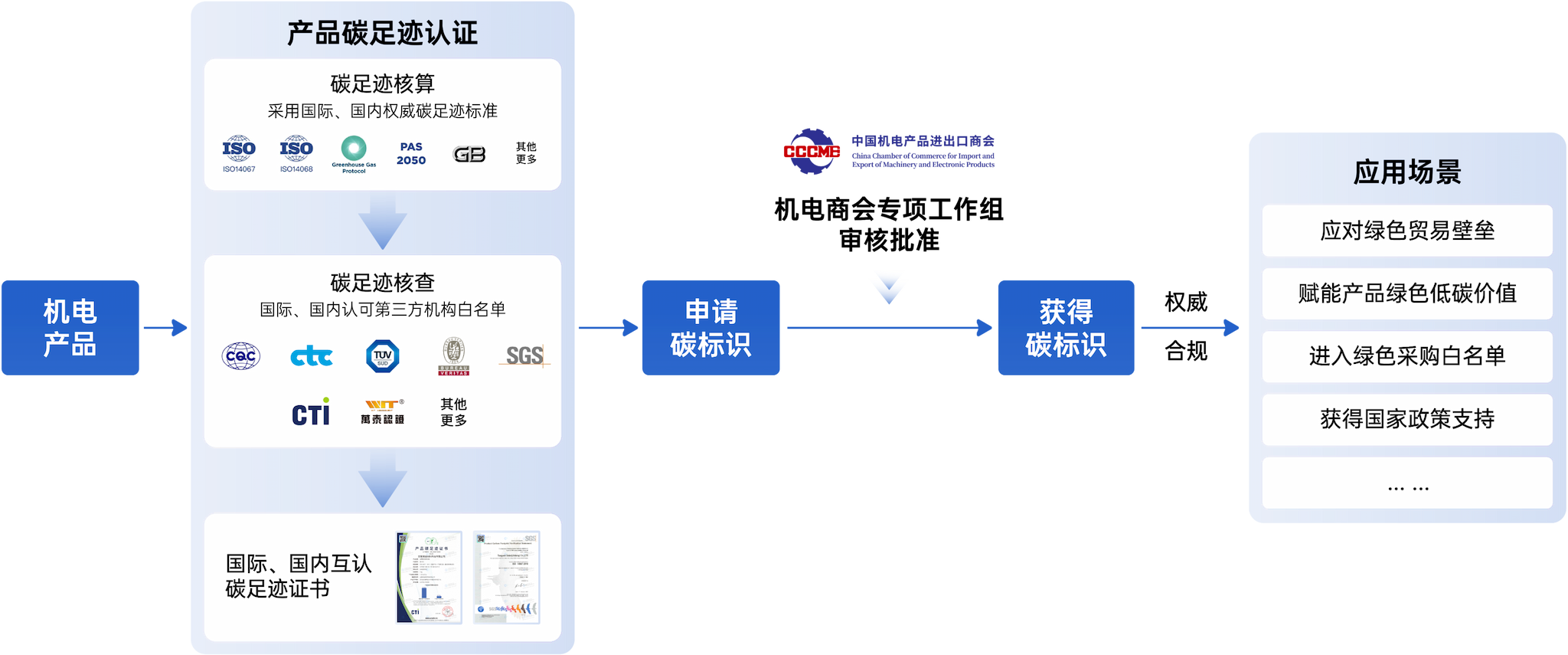China mechanical and electrical products carbon labeling
What is carbon labeling
Carbon label (also known as "carbon label") : is an environmental label, in order to mitigate climate change, reduce greenhouse gas emissions, promote low-carbon emission technology, in the form of labels to inform consumers of the carbon footprint and other key carbon information. The promotion of carbon identification helps to promote the low-carbon transformation of enterprises, help the coordinated decarbonization of supply chains, avoid green trade barriers, cultivate low-carbon consumption awareness, and achieve China's dual-carbon goal.

China mechanical and electrical products carbon labeling
Promote the "introduction" of international rules and the "going out" of local certification
Visible, traceable, recognizable

How do I have a carbon label


When you see the carbon label of China's mechanical and electrical products on the product, it means that the carbon footprint of the product has been accounted for in accordance with the internationally and domestically recognized carbon footprint standards and has passed the verification of the authoritative third-party certification body, and the carbon label has been reviewed and approved by the special working group of the mechanical and Electrical Chamber of Commerce, which is an authoritative certification, official recognition and credible green product for consumers.

Background of carbon labeling of mechanical and electrical products in China
Under the background of global climate change and international green trade barriers, authoritative, compliant and certified product carbon footprint and carbon identification have become the green pass for China's mechanical and electrical products to enter the international market, and the demand for carbon footprint, carbon identification and carbon disclosure of China's mechanical and electrical products production and marketing enterprises is increasingly urgent. Taking photovoltaic, low-voltage electrical appliances, lithium batteries and other mechanical and electrical products as an example, the purchase of mechanical and electrical products in Europe and the United States have put forward product carbon footprint requirements (such as the EU's "new battery Law" and "carbon border regulation mechanism (CBAM)"), more and more multinational companies have also incorporated product carbon footprint into sustainable supply chain management requirements...
Click to view